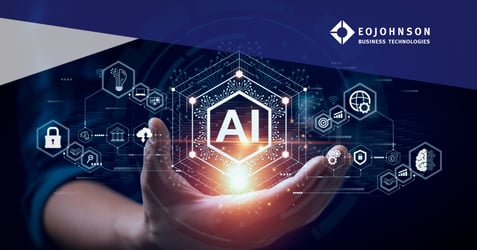Businesses rely on data more than ever to drive operations, inform decisions, and maintain compliance. However, migrating data from one system to another can be a daunting and error-prone task, especially for small and mid-sized businesses (SMBs) that lack sufficient IT resources. This is where Data Conversion as a Service (DCaaS) becomes a game-changer, enabling businesses to streamline data migration while minimizing risks, costs, and downtime.
Understanding Data Conversion vs Data Migration
Many businesses use the terms data conversion and data migration interchangeably, but they are distinct processes. Data migration refers to the transfer of data from one system or storage format to another, often as part of a cloud transition or software upgrade. Data conversion, on the other hand, involves transforming data into a different format or structure to ensure compatibility with the new system.
Despite these differences, both processes are integral to achieving a seamless transition. Businesses need to employ both data conversion and data migration strategies to guarantee that information remains structured, accurate, and accessible in the new environment. This is why a comprehensive data migration framework is crucial for navigating the complexities successfully.
The Challenges of Data Conversion and Data Accessibility
For many organizations, moving and converting data is not just about transferring files. It involves a host of issues and concerns:
- Data compatibility issues – Different platforms use varied data formats and structures, requiring conversion.
- Data integrity risks – Formatting errors, missing information, and duplications can disrupt business operations.
- Ensuring data accessibility – Without proper organization and data labeling, finding and utilizing migrated data becomes difficult.
- Security and compliance risks – Mishandling sensitive information can lead to breaches and regulatory violations.
Without the right expertise and tools, data migration and conversion can turn into an expensive, time-consuming, and error-prone process.
What is Data Conversion as a Service?
Data Conversion as a Service is a specialized solution that automates and manages the transformation of data from one format or system to another. By leveraging cloud-based tools and expert support, DCaaS ensures a smooth transition between legacy and modern systems with minimal business disruption.
DCaaS providers use advanced data mapping, data labeling, and validation techniques to ensure data is accurate, structured, and optimized for the new system. A service can handle:
- Structured and unstructured data
- Legacy system conversions
- Format transformations (CSV, XML, JSON, SQL, etc.)
- Secure data transfers and backups
- Data labeling for improved data accessibility
The Data Migration Framework
A robust data migration framework is essential to support the entire data migration journey. Here's how DCaaS contributes to it:
- Planning: A comprehensive plan for data conversion that fits within the overall data migration framework. This phase often includes identifying what data types need to be converted and establishing timelines.
- Execution: The actual data conversion and migration processes take place under the service provider's guidance, ensuring every step is managed efficiently.
- Validation and testing: Following the execution, testing and validation of the converted data are crucial. Service providers implement quality assurance measures to ensure that data is accurate and functional in its new environment.
5 Benefits of Data Conversion as a Service
1. Expertise and efficiency
Organizations can tap into specialized expertise in data conversion. Service providers often use advanced data labeling tools that not only simplify the data conversion process but also enhance the integrity and accessibility of data during migration. Their experience ensures that the converted data meets the requirements of the target system.
2. Cost-effectiveness
Hiring dedicated IT staff for data conversion and migration can be costly for SMBs. By outsourcing this to experts, companies can save costs related to hiring and training personnel. As a result, businesses can focus on core activities while leaving data management to professionals.
3. Improved data accessibility
Converting data into usable formats ensures that it can be easily accessed by various stakeholders. When data is structured appropriately post-conversion, it becomes easier to analyze, provides better insights, and enables better decision-making.
4. Minimized business disruption
One of the biggest concerns for operations managers and department heads is minimizing downtime during migration. Service providers use incremental migration strategies to move data in stages, allowing businesses to continue their operations without significant interruptions.
5. Enhanced security and compliance
CFOs and compliance officers need to ensure that sensitive business data remains secure during migration. DCaaS solutions use encryption, access controls, and compliance frameworks to protect data throughout the process. Proper data labeling also ensures compliance with industry regulations by classifying sensitive data appropriately.
Real-World Uses of Data Conversion as a Service
Many SMBs have streamlined their digital transformation efforts by outsourcing data conversion. Examples include:
- Finance and accounting departments - transitioning from legacy bookkeeping software to modern cloud-based accounting platforms with data labeling for improved accessibility.
- Healthcare providers - migrating patient records from paper-based systems to secure electronic health record (EHR) platforms while ensuring compliance with HIPAA regulations.
- Manufacturers - consolidating inventory and supply chain data into modern ERP systems for improved logistics and operational efficiency.
Final Thoughts on Data Conversion
Data conversion and data migration don’t have to be a bottleneck for SMBs undergoing a digital transformation. By leveraging Data Conversion as a Service, businesses can ensure a seamless, secure, and cost-effective transition to new systems. With automated data conversion, data labeling, and expert support, operations managers, department heads, and CFOs can focus on business growth rather than data headaches.
If your organization is planning a data migration or in need of other secure document management strategies, consider partnering with EO Johnson to make the process faster, safer, and more efficient while ensuring improved data accessibility. Contact us today to learn more.







